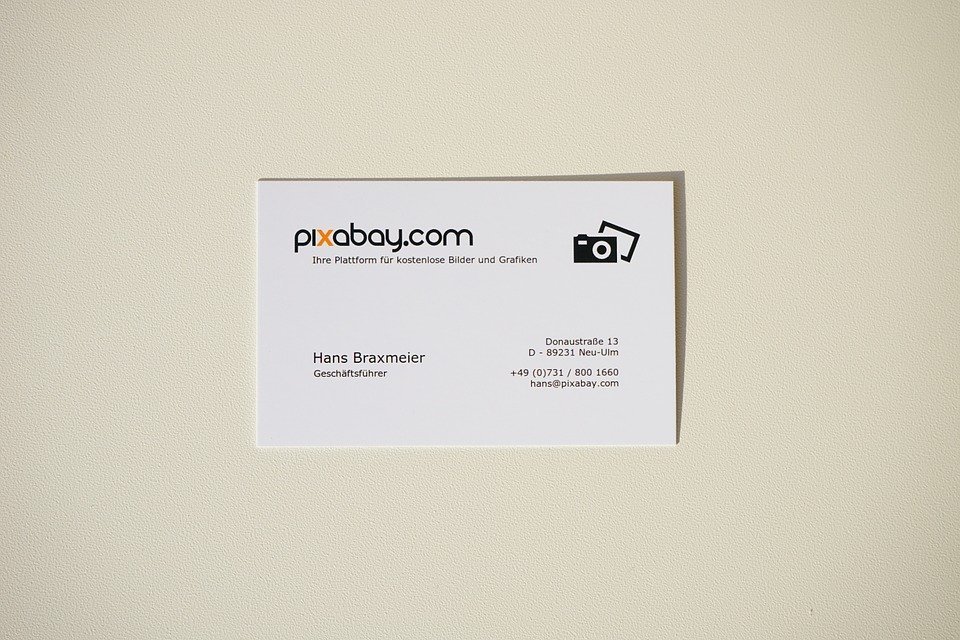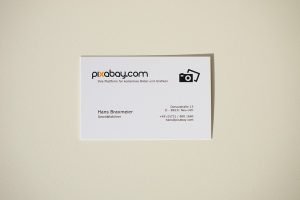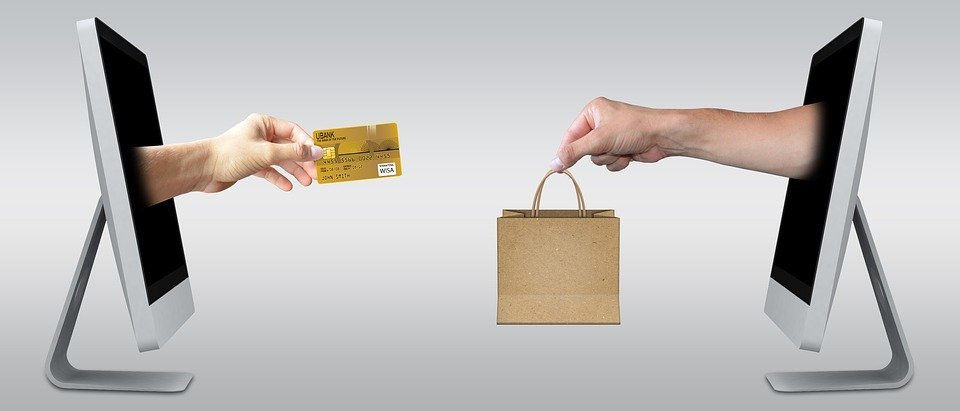5 Tips on Hiring Your First Employee

A small business owner, there’s only so much work you can do yourself. As your small business grows, you may need to hire employees to sustain its growth rate. Of course, hiring your first employee is a major milestone that shouldn’t be taken lightly. If you use the wrong approach, the employee may offer little or no benefit to your small business. Therefore, you should follow these five tips when hiring your first employee.
#1) Purchase Workers’ Compensation Insurance
When hiring employees, you’ll need to have workers’ compensation insurance for your small business. Although there are a few exceptions, nearly all businesses that operate in the United States with at least one employee are required to have workers’ compensation insurance.
#2) Register With Labor Department
In addition to obtaining workers’ compensation insurance, you must also register your small business with your state’s labor department. In the United States, employers are required to pay unemployment taxes for each of their employees. You won’t make these payments to your small business’s employees, however. You’ll make the payments to your state’s labor department, which is why it’s important to register your small business with the labor department.
#3) Advertise Job Listing
After getting your ducks in order, you can now advertise your job listing in an effort to attract candidates. Some small businesses simply place a “We’re Hiring” sign in front of their establishment. Given the superior reach of the internet, though, it’s recommended that you advertise your job listing online. You can publish the listing on your small business’s social media profiles as well as job recruitment websites.
#4) Assess Candidates’ Skills and Credentials
Perhaps the most important step to hiring your small business’s first employee is assessing the sills and credentials of candidates. Assuming your job listing generates a decent amount of exposure, you should have some applications coming in. You’ll then need to review each application while choosing the best-qualified candidate for the position.
#5) Set Up Payroll
Of course, you’ll also need to set up payroll when hiring your small business’s first employee. Don’t wait until you’ve already hired the employee to set up payroll. Because this is your first employee, you may encounter problems with managing his or her paycheck. As a result, you should set up payroll before hiring your first employee.
Have any other tips that you’d like to share? Let us know in the comments section below!
5 Super Simple Ways to Scale Your Small Business

Are you struggling to scale your small business? The ability to grow and scale is a defining characteristic of all successful businesses. By scaling your small business’s operations, you’ll naturally reach more customers and generate more sales. While scaling sound may difficult, though, it doesn’t have to be. Below are five super simple ways to scale your small business.
#1) Create a Referral Program
A referral program is a highly effective tool for small businesses. Statistics show that referrals are 30% more likely to make a purchase and have a 16% higher lifetime value than traditional leads. How to do you create a referral program exactly? Basically, a referral program is any type of incentivized program in which customers are rewarded for driving new customers, also known as referrals, to your small business.
#2) Launch a Website
If you haven’t done so already, consider launching a website for your small business. Even if you don’t intend to sell products or services online, you can still use a website to promote your small business, as well as its locally sold products or services. When a prospective customer performs an online search for your small business’s name, he or she may stumble upon its website.
#3) Target New Locations
Of course, targeting new locations can help to scale your small business. Some small businesses focus strictly on their surrounding city or region, neglecting to sell their products or services in other areas. If you’re willing to target new locations, though, you’ll discover it’s a highly effective way to scale your small business.
#4) Invest in Automation
Automation is perhaps one of the most effective ways to scale a small business. Granted, you can’t automate all of your small business’s day-to-day operations, but there are certain tasks that can and should be automated. Sending invoices or receipts, for example, can be automated using accounting software. Rather than manually creating each and every invoice or receipt, accounting software can take this burden off your shoulders through automation. Along with the other tips listed here, this will help to scale your small business.
#5) Sell to Existing Customers
You shouldn’t focus your marketing efforts strictly on new customers. Selling to existing customers can actually prove more worthwhile because they are easier to convert. According to Harvard Business Review, it costs up to 25 times more money for a small business to sell to a new customer than an existing customer.
Have anything else that you’d like to add? Let us know in the comments section below!
Top 5 Accounting Myths You Shouldn’t Believe

As a business owner, you shouldn’t believe everything you hear or read about accounting. While there’s plenty of information out there on the topic of accounting, not all of it is accurate. Unfortunately, this often leads business owners down the wrong path, resulting in a poor accounting strategy. To keep your business’s financial records in order, you shouldn’t believe the five following accounting myths.
#1) Accounting Requires Excellent Math Skills
While knowledge of math can certainly help, it isn’t a prerequisite for accounting. Most accounting software, for example, will perform math calculations automatically. You enter your business’s transactions, after which the accounting software will add them up. By eliminating the need for manual math calculations, accounting software reduces the risk of errors to promote cleaner financial records.
#2) Accounting Consists Strictly of Taxes
While calculating and preparing tax returns is an important step, accounting consists of more than just taxes. In the most basic sense, accounting is the act of recording all financial transaction. Whether it’s a credit or debit, all financial transactions processed by your business should be recorded. With that said, the creation of these financial records can certainly make tax preparation easier. But that doesn’t mean accounting is only related to your business’s taxes.
#3) You Must Hire a Professional Accountant
Contrary to popular belief, you don’t always need to hire a professional accountant to handle your business’s financial accounting needs. Assuming you run a small business that handles a low volume of sales, you can probably do it yourself.
#4) Accounting Isn’t Important
This statement couldn’t be further from the truth. According to the U.S. Small Business Administration (SBA), roughly half of all small businesses fail in their first five years. While small businesses can fail for any number of reasons, poor accounting consistently ranks at the top of the list. If you don’t invest enough time or resources into accounting, your small business may struggle to keep up with its competitors.
#5) All Accounting Software Is the Same
Don’t assume that all accounting software is made equal. There are dozens of types of accounting software, some of which are installed and accessed locally on a computer or device, whereas others are accessed over the internet via a Product-as-a-Service (PaaS) model. Quickbooks Desktop, for instance, is installed locally on a computer, whereas Quickbooks Online is available as cloud-based PaaS software.
Have anything else that you’d like to add? Let us know in the comments section below!
Common Tax Deductions for Rideshare Drivers

Ridesharing has become increasingly popular in recent years. According to to the Pew Research Center, roughly one in three Americans have used a ridesharing service — a number that’s expected to increase in the following years. If you’re thinking about becoming a rideshare driver, though, you’ll need to take advantage of all available tax deductions. Like with all businesses, you can deduct the cost of certain expenses from your income taxes.
Mileage
Not surprisingly, you can deduct the cost of mileage from your income taxes. The Internal Revenue Service (IRS) supports two different methods for calculating mileage deductions: standard or actual car expense. Standard mileage involves multiplying the number of miles you drove in the given year by the IRS’s standard rate for that year. In comparison, the actual car expenses method involves keeping track of all-driving related expenses, such as insurance, gas, maintenance, repairs and even automotive depreciation.
Smartphone
You can also deduct the cost of a smartphone from your income taxes, assuming you use your smartphone for ridesharing purposes. Whether you drive for Uber, Lyft or any other ride-sharing service, you’ll probably use your smartphone to find customers to pick up. You may even be required to call or text these customers prior to picking them up. Regardless, the IRS allows ride-sharing drivers to deduct the cost of their smartphone from their income taxes.
Dash Cam
If you recently purchased a dash cam to use in your vehicle, you can deduct it from your income taxes as well. It’s not uncommon for ride-sharing drivers to install a dash cam in their vehicles. With a dash cam present, ride-sharing drivers can rest assured knowing that their trips are recorded. At the same time, many insurance companies offer premium discounts for ride-sharing drivers who install a dash cam in their vehicle.
Free Items
Do you offer free bottled water, mints, gum, snacks or items to passengers? If so, you should keep track of the receipts for tax purposes. Any complementary items such as these can be deducted from your income taxes. And while you probably won’t spend hundreds or thousands of dollars on complementary items, claiming this deduction can still lower your tax liabilities as a ride-sharing driver.
Accounting Software or Services
You can deduct the cost of accounting software or services from your income taxes. Whether you use Quickbooks Online, Quickbooks Desktop or any other type of accounting software or service, you claim it as a deduction.
Have anything else that you’d like to add? Let us know in the comments section below!

5 Tips on How to Craft a Business Plan

Are you looking to start a new business in the near future? If so, you’ll need to create a business plan. Whether your business operates locally or online (or both), it will benefit from a well-prepared business plan. The U.S. Small Business Administration (SBA) even says that business plans are the “foundation” of a business’s success. To create an effective business plan to fosters success, follow these five simple tips.
#1) Start With an Executive Summary
Although there are numerous ways to structure a business plan, you should typically begin with an executive summary. The executive summary is an opportunity to describe the general focus of your business and what it does. It doesn’t have to be particularly long. On the contrary, most executive summaries consume just a single page of a business plan.
#2) Detail Your Business in the Company Overview
While you can describe your business in the executive summary, you should go into deeper detail about your business in the company overview section. The company overview section covers all the small details about your business, including its location, history, market and even structure (e.g. LLC vs S-Corp or C-Corp).
#3) Highlight Products and Services
Of course, you should also highlight your business’s products or services in your business plan. According to the SBA, an effective business plan should explain how customers or clients will benefit from purchasing the business’s products or services. In other words, you should create an “elevator pitch” that promotes your business’s products or services.
#4) Reveal Current and Future Projected Finances
Financial information is an important element of an effective business plan. Most businesses require capital to get up and running. In your business plan, information about your business’s current and future projected finances. When you apply for a loan — or other forms of lending-based funding — you can give the lender a copy of your business plan. Assuming it contains your business’s financial information, it will likely have a positive impact on your ability to secure startup capital.
#5) Include a Market Analysis
Don’t forget to include a market analysis in your business plan. What is a market analysis exactly? This component of a business plan delves into your business’s target market. In other words, it reveals your business’s ideal, target audience of customers as well as their respective location.
Have any other tips on creating a business plan that you’d like to share? Let us know in the comments section below!

5 Ways to Increase Your Business’s Customer Retention Rate

What’s your business’s customer retention rate? If most customers only make a single purchase, you’ll struggle to grow and expand your business. Statistics show that an average of 80% of a business’s sales come from just 20% of its customers. Therefore, you should consider the following tips to increase your business’s customer retention rate.
#1) Offer Exceptional Customer Service
The single most important thing you can do to increase your business’s customer retention rate is to offer exceptional customer service. By going above the expectations of customers, you’ll set your business apart from its competitors — all while encouraging customers to stay with your business and make additional purchases in the future.
#2) Create a Loyalty Rewards Program
Another way to retain more of your business’s customers is to create a loyalty rewards program. In the most basic sense, a loyalty rewards program is any program that rewards customers for making additional purchases. You can use a basic points-based system, for example, in which customers are rewarded with points for making purchases. Customers can then redeem these points for discounts, free products or services or other items.
#3) Reach Out to Existing Customers
Something as simple as reaching out to your business’s existing customers — whether by phone, email, social media or elsewhere — can help you achieve a higher customer retention rate. If a customer forgets your business, it’s unlikely he or she will return to make additional purchases in the future. Therefore, you should proactively reach out to existing customers with relevant marketing messages.
#4) Offer Limited-Time Promotions
Of course, offering limited-time promotions can entice your business’s existing customers to make a purchase and, therefore, increase your business’s customer retention rate. Regardless of what products or services you sell, consider creating promotions that are only good for a limited period of time. When customers see these deals, they’ll feel more inclined to take action so that they don’t miss the opportunity to save money.
#5) Encourage Referrals
You can even use referrals to increase your business’s customer retention rate. If a customer is happy with your business, ask him or her for referrals. Any new customers referred to your business may stay with your business for a long period of time after receiving a recommendation from a friend or family member. These are just a few ways to increase your business’s customer retention rate.
Have any other customer retention tips that you’d like to share? Let us know in the comments section below!

Don’t Let Insufficient Capital Hinder Your Business’s Success

If you’re in the process of starting a business, you’ll need to raise capital. All businesses need money to make money. Unfortunately, though, far too many entrepreneurs lack the necessary capital to launch and run their business. And without capital, you’ll face an uphill battle when attempting to turn your vision of a profitable and successful enterprise into a reality.
Nearly 4 in 5 Small Businesses Fail Because of Insufficient Capital
To put the important of raising capital into perspective, one study found that 79% of small businesses fail because of insufficient capital. In other studies, the number of failed businesses associated with insufficient capital is even higher.
The Impact of Insufficient Capital
How exactly can insufficient capital affect your business’s future success? Regardless of what your business does — or what you intend to do with your business once launched — you’ll need capital to execute its operations. If you’re launching a retail clothing store, for example, you’ll probably have to lease a storefront, purchase inventory and insurance, hire employees. If you’re launching a professional landscaping business, you’ll have to purchase lawnmowers and other equipment as well as insurance — and those are just a few of many related expenses.
Without capital, or without enough capital, you’ll also struggle to grow and expand your business after launching it. Lack of capital restricts businesses growth, preventing them from expanding into new markets and scaling their operations.
How to Raise Capital for Your Business
You can safeguard your business from problems such as these by taking the time to raise a sufficient amount of capital. First and foremost, however, you must determine exactly how much money your business needs. Review your business plan while paying close attention to your business’s financial needs. You probably won’t be able to determine exactly how much money your business needs, but this should give you a general idea.
After determining a general idea of how much money you need to start and run your business, you should explore some of the finance options. If you have money saved in a personal bank account or checking account, you can always tap into it. Alternatively, you can seek a business loan from either a bank or alternative lender.
When applying for a business loan, consider whether the loan is secured or unsecured. If it’s secured, you’ll have to use collateral to obtain it. If it’s unsecured, you won’t have to use collateral.
Have anything else that you’d like to add? Let us know in the comments section below!

Are Business Cards Still Useful?

If you operate a small business, you might be wondering whether you should invest in a set of business cards. With the advent of the internet and digital media, paper-based business cards have become less common. As a result, some business owners assume they are no longer useful or relevant. While business cards aren’t as popular as they were several decades ago, however, they can still help your business in several ways.
You Can Hand Them to Potential Customers in Person
When you encounter a potential customer who’s contemplating purchasing your small business’s products or services, you can give him or her one of your business cards. Not everyone owns a smartphone. And if a potential customer doesn’t have a mobile device, he or she may not remember your small business’s name or contact information. A simple solution is to give potential customers a business card.
They Project Credibility
Business cards also project credibility. Customers and potential customers will view your small business as being more credible than its competitors if you give them a business card. You can create custom business cards using your small business’s logo, color scheme and other visual brand elements. Upon seeing this highly professional design, customers and potential customers will feel confident knowing that your small business is credible and legitimate.
Educates Potential Customers About Your Business
Business cards can contain more than just your small business’s name; they can include other relevant information such as your small business’s photo number, address, email address, website address and hours of operation. As a result, they are highly useful for educating potential customers about your small business.
You Can Leave Them Behind
A benefit of using business cards that’s often overlooked is the fact that you can leave them behind. Many restaurants, for example, hold giveaway drawings using business cards left by their customers. If you dine at one of these restaurants, you can place your business card in a jar for a chance to win a prize. Most importantly, though, other patrons may see your business card inside the jar, thereby giving your small business additional exposure.
They Are Inexpensive
Finally, business cards are relatively inexpensive, so they won’t hurt your small business’s finances. You can often purchase up to 500 custom business cards for as little as $50, essentially making them 10 cents a piece.
What are your thoughts on business cards? Let us know in the comments section below!

Is Accounts Receivables Financing a Smart Funding Solution?

It’s a paradox that countless business owners encounter: You need money to make money. If you’re starting a business, you’ll need to purchase goods and services to get your operations up and running. If your business allows customers to pay after their product has been delivered or their service has been performed, however, accounts receivables financing may offer an effective way to fund your new business.
What Is Accounts Receivables Financing?
Accounts receivables financing is a commercial funding solution that involves borrowing money from a lender while using your business’s accounts receivables as collateral for the loan. To better understand accounts receivables financing, you should first look at accounts receivables.
Basically, accounts receivables are invoices for money owed to your business by your customers. If you’ve sold a product or service to a customer and are awaiting his or her payment, you can use that invoice as collateral for a secured loan. If you don’t pay back the loan, the lender can claim ownership of the invoices and, therefore, seek collection from the respective customer or customers.
Accounts Receivables Financing Pros
Accounts receivables financing can ease the burden of securing capital to fund your business. Lenders are particularly cautious regarding the businesses to which they lend money, especially if that money is in the form of an unsecured loan. With unsecured loans, the lender is essentially hoping that the business doesn’t fail. If the business fails, the lender may not recoup the loaned money.
Accounts receivables financing, however, is a form of secured lending, so it’s easier to acquire than other, unsecured loans. When you apply for accounts receivables financing, you provide the lender with rights to your business’s outstanding invoices in the event you don’t follow through repayment.
You’ll also find that accounts receivable financing offers low interest rates. In many cases, the interest rate for an accounts receivables loan is less than 5%.
Accounts Receivables Financing Cons
On the other hand, accounts receivables financing isn’t viable for all businesses. If your business demands payment from customers upon delivery or completion of the purchased goods or services, you may not have any outstanding invoices, in which case you won’t be able to use accounts receivables financing.
But if your business collects outstanding invoices, accounts receivables financing could be a smart decision. As revealed here, it’s easy to obtain and offers low interest rates.
What do you think of accounts receivables financing? Let us know in the comments section below!

5 Things to Consider When Applying for a Business Loan

Do you need money to fund your small business? If so, you might be thinking about applying for a loan. A business loan is undoubtedly an effective way to cover the expenses associated with starting and running a business. But not all business loans are the same. When applying for a business loan, you should consider the following to ensure you choose the right type of loan.
#1) SBA or Non-SBA
There are both Small Business Administration (SBA) business loans and non-SBA loans. SBA business loans are backed by the SBA, so they typically have lower interest rates and are easier to obtain than non-SBA loans. Therefore, you should inquire about an SBA business loan when contacting banks. You can still check out non-SBA business loans, but you’ll probably get a better deal with an SBA business loan.
#2) Secured or Unsecured
You’ll also find that business loans are either secured or unsecured. Secured business loans require the use of collateral, whereas unsecured business loans do not require collateral. With a secured business loan, in other words, you must provide the bank with one or more assets to be used as collateral, such as real property. If you don’t pay back your business loan, the bank can claim ownership of the collateral.
#3) Interest Rate
Whether you choose an SBA or non-SBA business loan, pay attention to the interest rate. If you’re looking to acquire an SBA business loan, you can expect an interest rate of about 8% to 10%. For a non-SBA business loan, interest rates can range from 10% to 20% — sometimes even higher.
#4) Personal Guarantee
You may discover that some banks require you to make a personal guarantee when applying for a business loan. With a personal guarantee, you are essentially guaranteeing that you will personally pay back the loan, even if your business goes under. Banks are more likely to give you a business loan if you offer a personal guarantee, but it could expose your personal assets, including your cash savings, to your business’s liabilities.
#5) Term
Finally, consider the term when shopping for a business loan. Of course, “term” refers to the length of the loan. While terms can vary, most business loans have an average term of three to 20 years. Generally speaking, the longer the term of a business loan, the lower the payments will be. But the downside to choosing a business loan with a long term is that you’ll have to pay it back over a longer period of time.
Have anything else that you’d like to add? Let us know in the comments section below!
